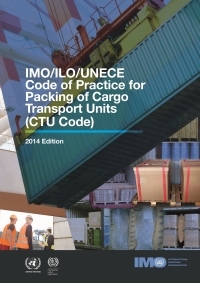The marine cargo industry has changed significantly over the past few decades, especially the way cargo is transported. Before sea containers were introduced, dry cargoes were usually shipped as break-bulk cargo or in bulk. Break-bulk cargo includes items that can be stacked on a pallet or crated, such as steel pipes and coils. Bulk cargo can also be shipped as break-bulk cargo in one- or two-ton bags. Today most break-bulk cargo is shipped in sea containers. Even cargoes traditionally transported on break-bulk ships, such as lumber and steel, are often transported inside sea containers now.
There are several distinct benefits to shipping in containers:
- Reduced exposure of cargo to physical hazards
- Easier stowage and securing on ocean vessels and other transport carriers
- Shorter vessel turnaround time in port
- Faster and much more efficient shipping across the multi-modal transportation system

Container shipping has a major disadvantage, however. The cargo is not visible once it is inside the container, making it impossible to tell if it is well-packed and secured for transport. Those responsible for packing, loading and securing the cargo in the container are the last people to view the cargo before container doors are shut and sealed. Unless the container is damaged or opened for customs inspections, the doors are not usually opened again until the container arrives at its final destination.
Inadequate packing, improper stowage and insufficient blocking and bracing can result in damage to the cargo, the container and the loading/discharge equipment. More importantly, these poor practices can cause serious injury to those handling and transporting the container. Workers in the transport chain have no choice but to rely completely on the skills of those who have packed and loaded the cargo into the container. Incorrect handling puts a number of people at risk, including:
- Stevedores and dock workers at the load, discharge and transshipment ports
- Crew members on ocean and inland waterways vessels
- Road and rail workers
- Surveyors, customs agents and personnel from other government agencies who may have to inspect cargoes
In addition, the general public is endangered on the roads and waterways by badly packed freight containers.

These safety concerns are addressed by the 2014 IMO/ILO/UNECE Code of Practice for Packing of Cargo Transport Units (CTU Code). The publication was jointly developed by the International Maritime Organization (IMO), the International Labour Organization (ILO) and the United Nations Economic Commission for Europe (UNECE) to mitigate risks through a non-mandatory global code of practice for the handling and packing of cargo transport units for transportation by sea and land.
The CTU Code provides comprehensive information on all aspects of loading and securing cargo in containers, taking into account the requirements of all sea and land transport modes. It is intended to assist employers’ and workers’ organizations, governments and the entire industry with ensuring the safe stowage of cargo in containers.
Regrettably, the CTU Code faces many hurdles, including a lack of training, language barriers and the volume and depth of its information. These issues are exacerbated by dramatic variations in the types of cargo now being carried in containers and the complexities of international supply chains. With the many challenges facing the industry in achieving widespread adoption, we continue to see many truck rollovers, train derailments, cargo spillages and fires and explosions onboard ships and in ports.
Credible statistics are difficult to obtain, in part due to state authorities’ lack of engagement with the IMO’s container inspection standard. However, an attempt was made to estimate the extent of the problem based on the United Nations Conference on Trade and Development (UNCTAD) trade statistics and the results of the relatively few inspections made during the last 15 years. Extrapolating from the UNCTAD data, it is estimated that 24% of inspected containers carrying dangerous goods (DG) were found to be badly packed – approximately 25.9 million containers each year. Considering that the cargoes declared as DG represent only about 10% of all containers, the potential number of improperly packed containers could be significantly higher, posing a threat on their journey through the supply chain.
To ensure the safety of people, equipment and cargo during transport, marine cargo surveyors are often employed to inspect, recommend and ensure that cargoes are adequately packed, loaded and secured inside containers on ships, trucks and other transport vehicles. They are usually familiar with the CTU code and have a wealth of experience with a variety of cargoes.
A coalition of leading cargo industry organizations representing the global supply chain is continuing its campaign for safer practices in packing freight containers and other cargo transport units (CTUs). In a recent meeting at the IMO, the group asked delegates of IMO member states to disseminate the content of the CTU code, as well as encourage and oversee its use within their jurisdictions.
Capt. Ruan Desouza, Vice President, Marine
Vericlaim Canada
References:
International Maritime Organization (IMO) http://www.imo.org/en/Pages/De...
Global Shippers Forum (GSF) https://globalshippersforum.co...
ICHCA International https://ichca.com/
TT Club https://www.ttclub.com/
World Shipping Council (WSC) http://www.worldshipping.org/
Chamber of Shipping of British Columbia http://www.cosbc.ca/index.php/...